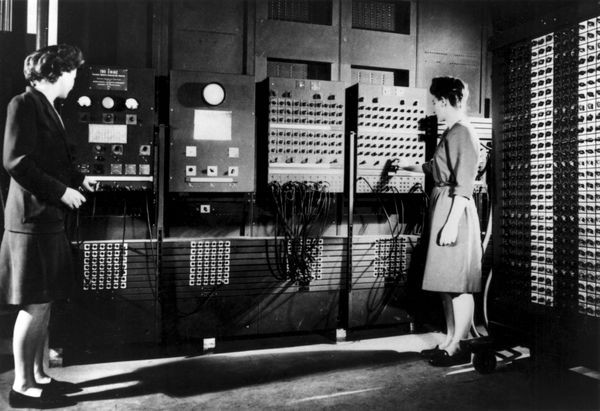The invention of "Computers"
 Bekhruz Qudratov
Bekhruz Qudratov
Introduction
Nowadays, computers are everywhere and do a lot of stuff, from government paperwork to agricultural work. For example, early humans used handmade tools to survive, but now, handmade tools, which require physical work, need to survive themselves, because people are getting comfortable sitting all day on the couch and letting computers do the work. Take cutting wood as an example: after the invention of axes, it was a lot easier to cut wood, but nowadays computer-driven devices cut wood. It still requires human work, but it is significantly easier than cutting the tree with an axe. Who chooses to use strength when you can sit and press buttons to cut trees? One day, I asked myself, if computers automatize human tasks, what will humans do? How can they earn if they do nothing? Well, we have not come this far that computers do all the work, but the time will come. Before answering this question, I want to go through the early models of computers and their inventors.
When it was invented and by who?
As I said earlier, computers are everywhere. There are many types of computers: laptops, desktops, tablets, and smartphones (yeah, you can count them as computers too). When was it created? And who was the genius who created such a thing? To answer this, we need to go back to the early 19th century. The first version of a programmable computer was invented by Charles Babbage in 1822. He designed machines called the Difference Engine and later the more advanced Analytical Engine to automatically do calculations and create accurate mathematical tables, which were previously done by human "computers" (people who calculated by hand).

Why was the computer invented?
Computers were invented to solve two main problems:
Automating mathematical calculations
Babbage wanted to reduce errors and speed up the process of creating mathematical tables, which were essential but full of mistakes when done by people.Improving reliability and efficiency
Machines could work faster and more accurately than humans. It helped scientists, engineers, and governments with tasks that required lots of data processing.
Computers evolved over time, becoming able to do different kinds of tasks by following instructions, not just math calculations.
How the first concepts of general-purpose computers looked like?
Well, early computers were truly massive—many were the size of an entire room. For example, ENIAC (one of the first electronic general-purpose computers) weighed about 27 tons, filled 1,800 square feet (approximately 167 square meters), and used around 17,000 to 18,000 vacuum tubes. These vacuum tubes would light up and create a glowing effect when the machine was working.
ENIAC was about 8 ft tall, 3 ft deep, and nearly 100 ft long.
It consumed huge amounts of electricity and generated a lot of heat.
Other early computers also took up large rooms or, in some cases, were the size of large cabinets or entire desks.
Brief Description to ENIAC

The ENIAC (Electronic Numerical Integrator and Computer) was invented and completed in 1945. It was put to practical use on December 10, 1945, and was formally dedicated at the University of Pennsylvania on February 15, 1946. The work on ENIAC began in 1943 and was completed in 1945 by John Mauchly and J. Presper Eckert. It was part of a U.S. Army project during World War II to calculate artillery firing tables.
Reflection: What Will Humans Do in the Future?
I searched for an answer to this question for a long time and finally came to a conclusion: if computers eventually automatize most human tasks, humans will likely shift from physical labor to roles that involve creativity, problem-solving, and managing or improving technology. Even if machines do the work, humans will still be needed to design, maintain, and supervise these systems.
New industries and jobs will also emerge that we cannot even imagine yet, just like the rise of the tech industry in the past century. People could focus on art, research, education, entertainment, and innovation—things that computers cannot fully replicate.
In other words, while machines may take over repetitive tasks, humans will find new ways to create value, earn a living, and pursue meaningful work. The key is adapting to changes and developing skills that complement, rather than compete with, computers.
Subscribe to my newsletter
Read articles from Bekhruz Qudratov directly inside your inbox. Subscribe to the newsletter, and don't miss out.
Written by
